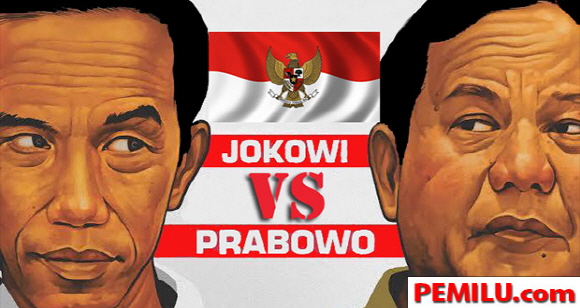
BANDUNG, July 6 (EngineeringDaily) --Indonesia will hold its presidential elections on the 9th of July. The two candidates, Prabowo Subianto and Joko Widodo, have strong platforms with regards to national infrastructure. Both are aware of the importance of this particular issue to their campaigns, but the two men have very different approaches.
Subianto, along with running mate Hatta Rajasa, favor government-sponsored, big-budget development and are determined to pour Rp 1,400 trillion (USD 117 million) into infrastructure development during the period 2015 - 2019. This amounts to about 10.32 percent of the state budget (APBN) over the five-year period. The Rp 1,400 trillion funds will be used to build roads, bridges, railways, seaports, fishing ports, airports, electricity networks, irrigation systems, and railroads.
The improvements to infrastructure will certainly benefit the nation, but those opposed to the Subianto-Rajasa plan argue the funds could be better used if applied more diversely. Critics refer to a report by the World Bank stating that developing countries require USD 1 trillion to USD 1.2 trillion to prop up economic growth, achieve increased productivity, alleviate people from poverty, and improve people's welfare. Rather than dedicated such a large percentage of the national budget solely to infrastructure, they support a more balance plan.
While the Subianto-Rajasa pair proposes a ‘big push strategy’, Joko Widodo and his running mate Jusuf Kalla focus on the development of sustainable mass transport financed by a development banks. This plan will depend less on the federal budget, and should result in lower overall costs by reducing the use of private vehicles in favor of mass transit by up to 30 percent.
In addition to mass transit, construction of marine transport, highways, and railways are highlights of the Widodo-Kalla platform. They also want to build a freight airport in each economic corridor, as well as marketplaces (especially traditional ones) and power plants.
The aim of Jokowi and Kalla’s plan is to encourage growth throughout Indonesia, both in the capital city and outlying regions, for which a system of connectivity must be built and opened wide. To that end, ports will be revitalized, ocean and river shipping strengthened, fleets and routes added, transportation developed, and transportation safety and security strengthened. Their vision for Indonesia is to be the axis of maritime world, as it was as the kingdom of Majapahit in the 13th to 16th centuries.
The different infrastructure plans presented by each candidate are sure to create discussion amongst the country’s voting public, and support for the plans may have a large part in determining which team will be voted into office on July 9th.
A comparison of the infrastructure platforms for each pair of presidential and vice presidential candidates can be seen in the table below.
| Prabowo Subianto – Hatta Rajasa | Joko Widodo - Jusuf Kalla |
| 1. 3,000 km of new roads and 4,000 km of railroads. New seaports and airports. | 1. 2,000 km of new roads |
| 2. Expedite the construction of fishing ports in coastal regions and improve port services to reduce transport time and cost. | 2. Improve roads in Sumatera, Java, Kalimantan, Sulawesi and Papua. |
| 3. Commence the planning process to relocate the Capital of State. | 3. Development of integrated mass public transport system (sea, air, & land). |
| 4. Accelerate the provision of housing for 15 million citizens that have not yet owned a house through “land bank” for people and apartment towers | 4. Increase the number of passenger and freight ships and pursue modernization of material handling at ports. |
| 5. Modernize traditional marketplaces. | 5. Build 5,000 traditional marketplaces. |
| 6. Speed up the development of basic infrastructure, especially in the six economic corridors of MP3EI. | 6. Construction of freight only airports and extension of airport runways. |
| 7. Development of supporting infrastructure in the outermost islands. | 7. Enhance inter-island pioneer services and increase the number of pioneer air transport routes. |
By Isamil Al Anshori


